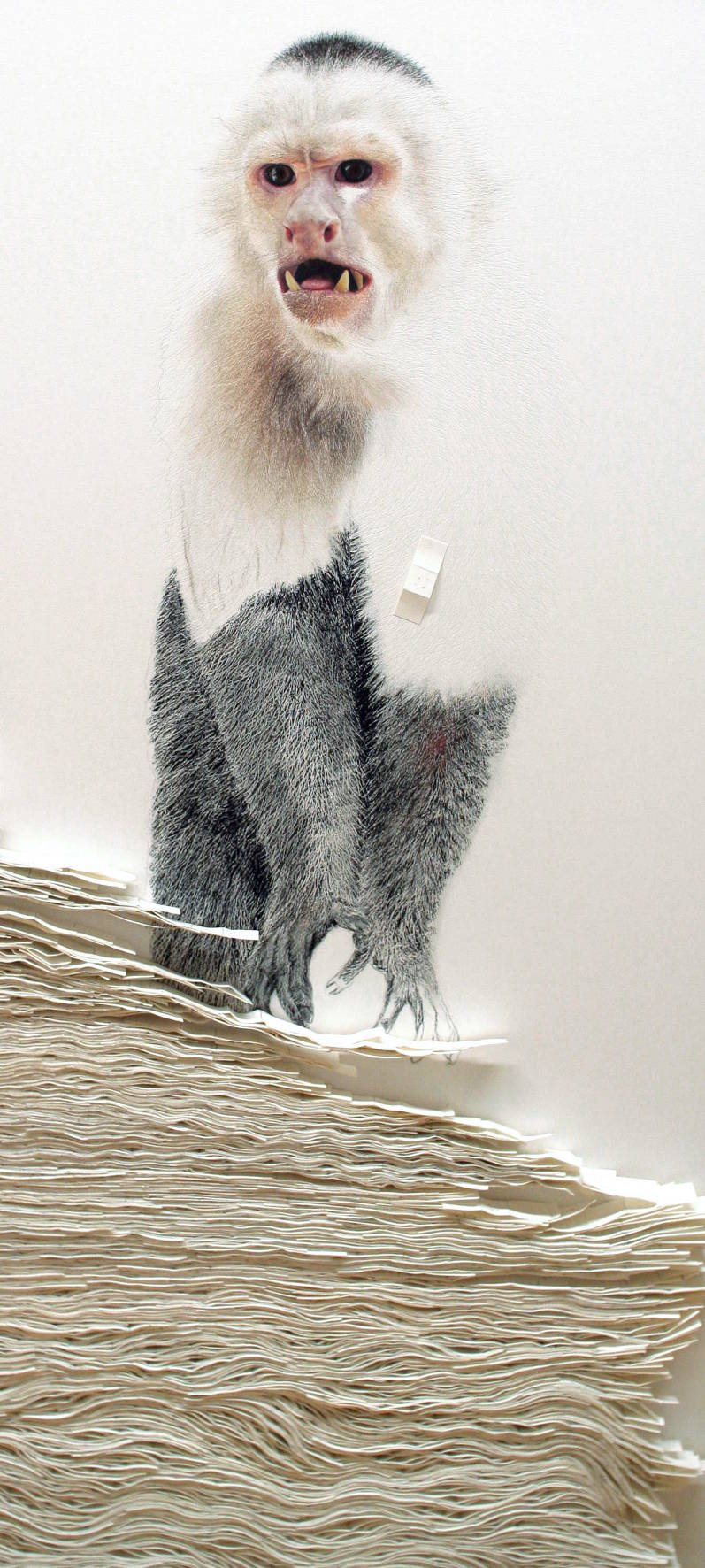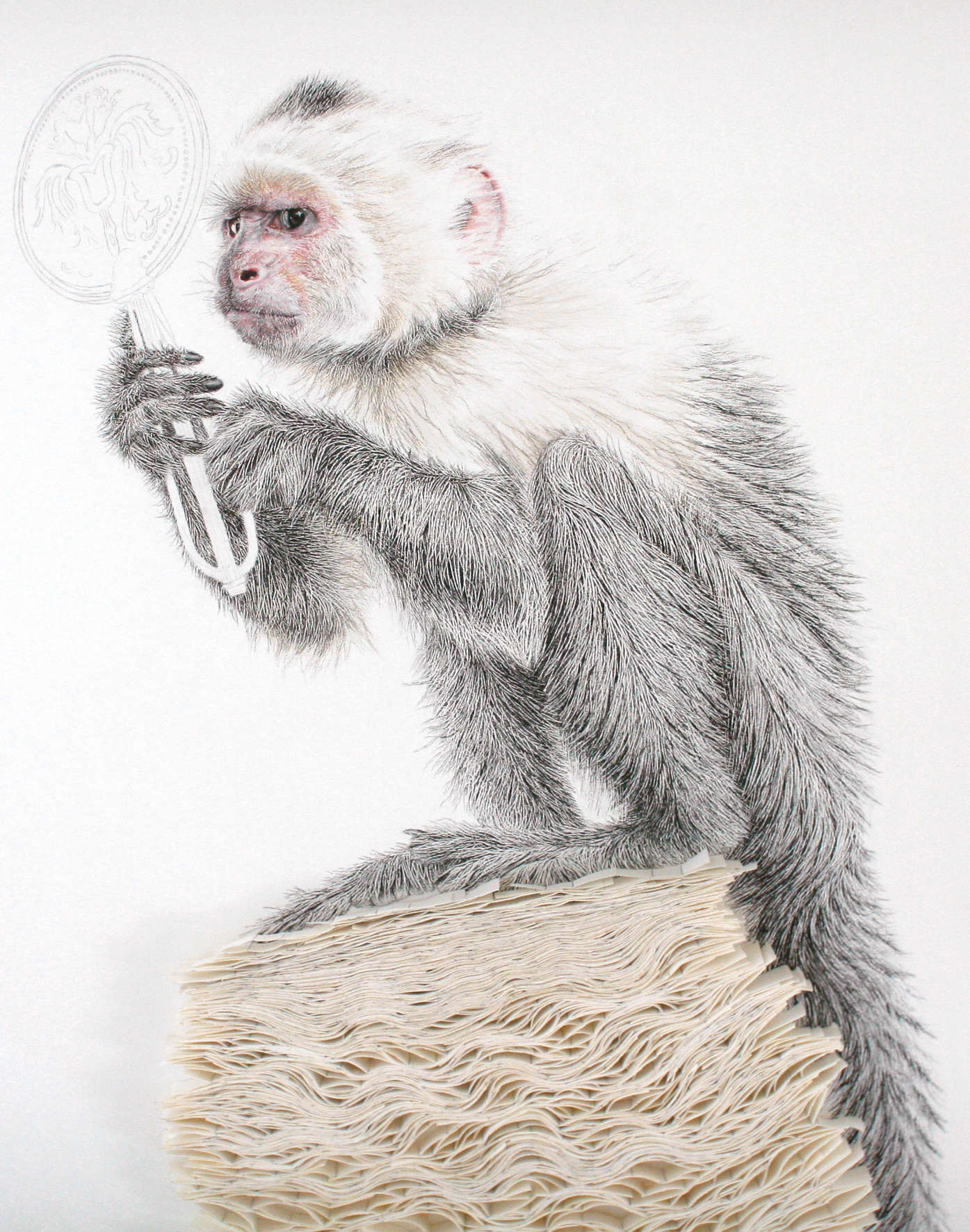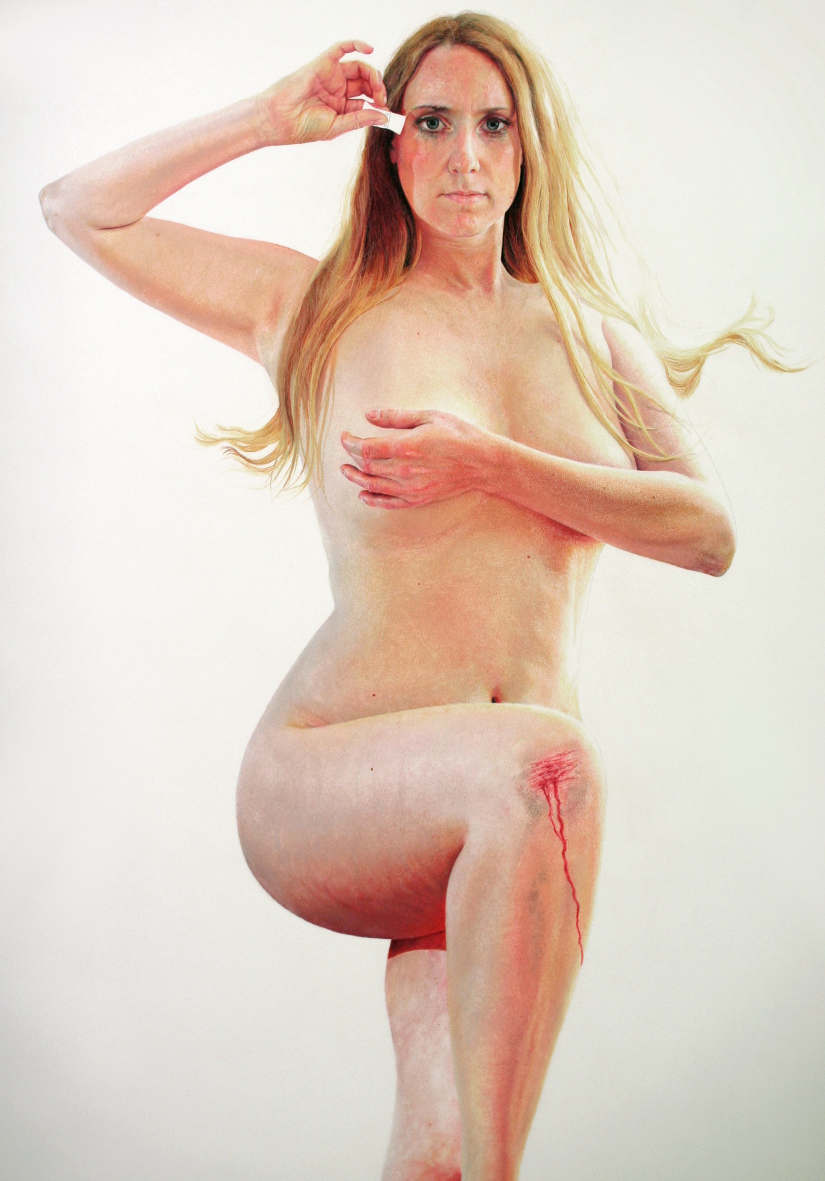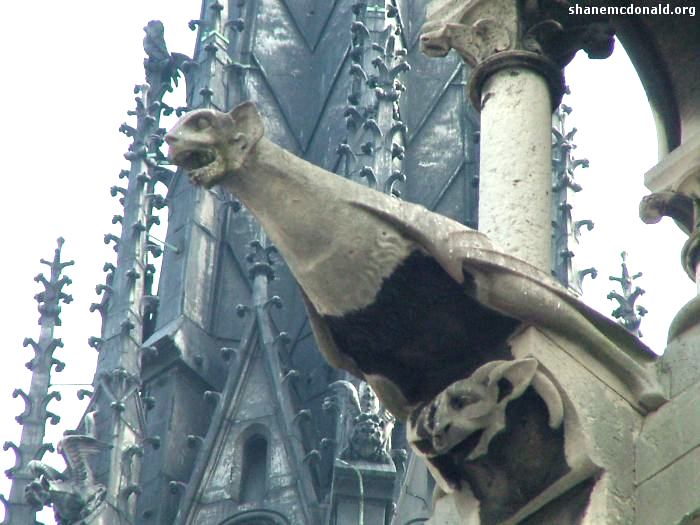
Apotropaion (Gargoyles), Notre Dame, Paris, France
Source (26.02.2014 www.shanemcdonald.me)
Courtesy, Shane McDonald, Ireland
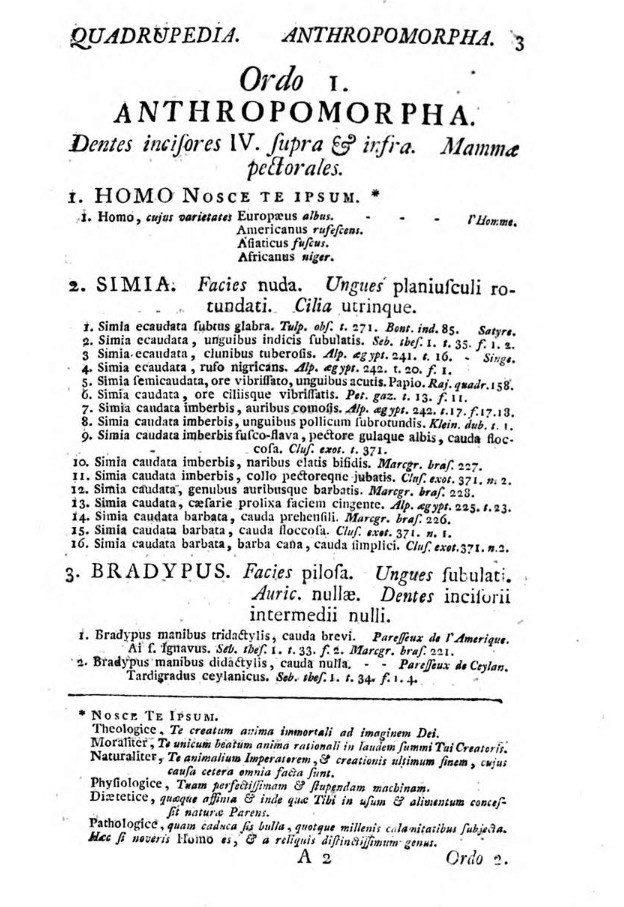
INTRODUCTION: Anthropomorpha
Anthropomorpha that is the link for questioning the mechanisms that produce and determine the human.
The term Anthropomorpha (human-like) originates from a defunct taxon that Carl von Linné (founder of the modern scientific taxonomy) resigned 1758 in his 10. edition of the Systema naturae (he replaced it by the taxon Primates). In the order Anthropomorpha he did not attach a specific characteristic, nor a given preexisting biological feature to the species of Homo, instead he stated an imperative as the unique difference to the animal, namely the old philosophical aphorism “nosce te ipsum” (read thy self).
This determination of species provides an insight view, how through a paradoxical mechanism the human can be produced inside “itself”. Homo, the anthropomorphic animal, has to, in order to become human, recognize itself as non-human and in doing so suspending itself. And by excluding itself, the human will be included and vice versa. A double bind, a bipolar practice of border drawing and demarcation. (cf. Agamben: The Open, 2003)
The different works are surrounding this double bind and the question of the human/animal separation. Here the (subjective) practices, operations and imaginations that draw or suspend borders and establish representations and realities, are becoming itself the source of this question. They expound the problem of what seems to underlie any representation (of the animal/human); reduction, distinction, creation. (Where consequences might be anything else but harmless).
